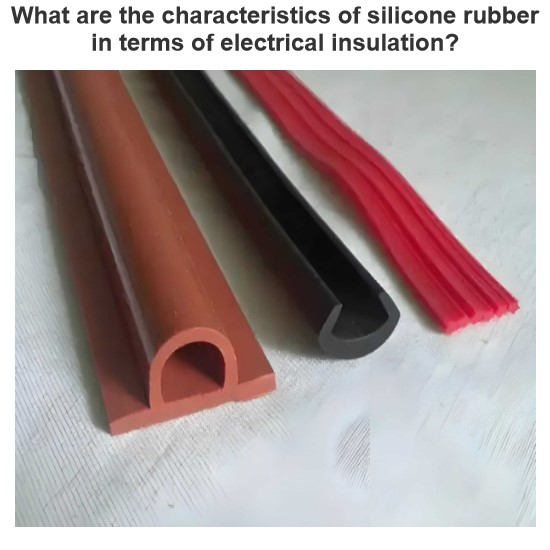Bimetals: Definition, Properties, and Applications
A bimetal is defined as an object that is composed of two separate metals joined together by a metallurgical process. Unlike alloys, which are mixtures of two or more metals, bimetals consist of layers of different metals that retain their individual attributes. Bimetals can also be called bimetallic products or bicomponent materials.
Bimetals are characterized by two distinct metallic zones of the parent metals, which perform mechanically and electrically as a single unit. The benefit of bimetals is the ability to fully utilize the best qualities of each metal within one single product. For example, bimetals can combine the strength of one metal with the corrosion resistance of another, or the conductivity of one metal with the cost-effectiveness of another.
Bimetals are widely used in various industries and applications, such as electrical conductors, electrical contacts, thermostats, thermometers, protective devices, clocks, coins, cans, blades, and more. In this article, we will explore the working principle, common combinations, and major applications of bimetals.
How do bimetals work?
The working principle of bimetals is based on the fact that different metals have different coefficients of linear thermal expansion (αL), which means they expand or contract at different rates when heated or cooled. The coefficient of linear thermal expansion is defined as the fractional change in length per degree change in temperature.

Where,
l is the initial length of the object,
Δl is the change in length,
Δt is the change in temperature,
The unit of αL is per °C.
A bimetal consists of two strips of two different metals having different coefficients of linear thermal expansion, welded together lengthwise. A bimetal at normal temperature is shown in the figure below.

When heated, the expansions in the length of both metal strips are different. This causes the bimetallic element to bend and form an arc in such a way that the metal with a higher coefficient of linear thermal expansion is on the outer side of the arc, and the metal with a lower coefficient of linear thermal expansion is on the inner side of the arc as shown in the figure below.

When cooled, the bimetallic element bends and forms an arc in such a way that the metal with lower coefficient of linear thermal expansion is on the outer side of the arc, and the metal with higher coefficient of linear thermal expansion is on the inner side of the arc as shown in the figure below.


The above phenomenon can be used to produce a useful device for detecting and measuring changes in temperature.
What are some common combinations for making bimetals?
Many combinations of metals with different coefficients of linear thermal expansion can be used to form bimetals. Some of the commonly used combinations for making bimetallic strips are listed below:
Iron (high αL) and nickel (low αL)
Brass (high αL) and steel (low αL)
Copper (high αL) and iron (low αL)
Constantan (high αL) and Invar (low αL)
What are some major applications of bimetals?
Bimetals have many applications in various fields. Some of these are listed below:
Thermostats
Bimetals are very useful for making thermostats for automatic switching of circuits to control the temperature of certain appliances such as electric heaters, electric irons, refrigerators, electric ovens, etc. In some circuits, the current passed through the thermostat itself produces heat for its operation.
A typical bimetallic thermostat for this operation is shown in the figure below:



In operation as a thermostat, one end of the bimetal is fixed and connected to the source of supply. The other end is free to move. An electrical contact is attached to the free end of the bimetal, which moves with its expansion and bending.
At normal temperature, this moving contact makes contact with a fixed contact, as shown in the figure above. When heated, this bimetallic strip bends and disconnects from the fixed contact, as shown in the figure below. This opens or closes a circuit depending on its design.
When cooled down to normal temperature again, the bimetal returns to its original shape and closes or opens a circuit depending on its design.

An example of this type of thermostat is a thermostat used in an electric iron.
In the figure above, the bimetal is a straight strip; however, it can be made in the form of a coil (as shown in the figure below) to increase its length and sensitivity.



Thermometers
Bimetallic strips can be used in direct indicating type thermometers. In thermometers, the bimetal strip is used in coil form.
A typical type of thermometer using a bimetallic strip in coil form is shown in the figure below:


One end of this coil is connected to the housing of the instrument and the other end is connected to the pointer.
When heated, the free end of coil moves, which results in the deflection of the pointer on the scale.
Scale is calibrated in terms of temperature. So that the deflection of the pointer directly indicates the temperature on the scale.
Protective devices
Bimetallic thermostat-based relays are used for detecting overcurrents in electric devices to protect them from damage. The current flowing through a circuit or device is passed through a heating coil which heats up a bimetallic strip.
Due to heating, the bimetallic strip bends and operates a tripping circuit to disconnect the electrical circuit or device from the power supply.
An example of this type of protective device is a circuit breaker.
Clocks
Mechanical clock systems are very sensitive to temperature changes, which result in errors in their operation. By using a bimetallic strip, the error can be compensated up to a considerable extent.
A typical type of clock using a bimetallic strip is shown in the figure below:
The balance wheel, which regulates the speed of movement, has a rim made of two metals with different coefficients of linear thermal expansion. When heated, the rim bends slightly inward, reducing its diameter and increasing its speed. When cooled, the rim bends slightly outward, increasing its diameter and decreasing its speed. This compensates for the changes in elasticity of spring due to temperature variations.
Coins
To cut costs and prevent people from melting them down for their metal value, coins are often composed of cheap metal covered with a more expensive metal. For example, the United States penny was changed from 95% copper to 95% zinc, with a thin copper plating to retain its appearance. This makes it a type of trimetallic object, which has three layers of different metals. Another example is a bi-metallic coin, which has two distinct parts made of different metals. For example, the Canadian two-dollar coin has an outer ring made of nickel-plated steel and an inner core made of aluminum bronze.
Cans
Tin cans consist of steel covered with tin. The tin prevents corrosion by forming an oxide layer on the surface. This makes it another type of trimetallic object, which has three layers of different metals. Another type of can is an aluminum can, which has an aluminum body and an aluminum alloy lid with a pull tab. This makes it easier to open without using a can opener, but also harder to recycle due to its mix of metals.
Blades
Blades for bandsaws and reciprocating saws are often made with bimetal construction. The teeth, made of high-speed steel, are bonded (by various methods, such as electron beam welding or laser beam welding) to the softer high-carbon steel base. Such construction makes for blades with a better combination of cutting speed and durability than non-bimetal blades because the advantages and disadvantages of each of the metals are applied in the best locations: the teeth are harder (and thus cut better), but also more brittle; meanwhile, the body area of the band is softer (which would make for poorer teeth), but also less brittle, and thus more resistant to cracking and breaking (which is desirable in the body area).
Bimetals are objects that are composed of two separate metals joined together by a metallurgical process. They have two distinct metallic zones that retain their individual attributes but perform mechanically and electrically as a single unit. Bimetals work based on the different coefficients of linear thermal expansion of the parent metals, which cause them to bend when heated or cooled. Bimetals have many applications in various fields, such as thermostats, thermometers, protective devices, clocks, coins, cans, blades, and more.
Conclusion
Bimetals are versatile and useful products that can combine the best qualities of each metal within one single product. They can detect and measure changes in temperature, control circuits, and devices, cut metals and other materials, compensate for errors in mechanical systems, reduce costs and prevent corrosion, and more. Bimetals are examples of how metallurgy can create innovative solutions for various industries and applications.
Statement: Respect the original, good articles worth sharing, if there is infringement please contact delete.
Electrical4U is dedicated to the teaching and sharing of all things related to electrical and electronics engineering.













